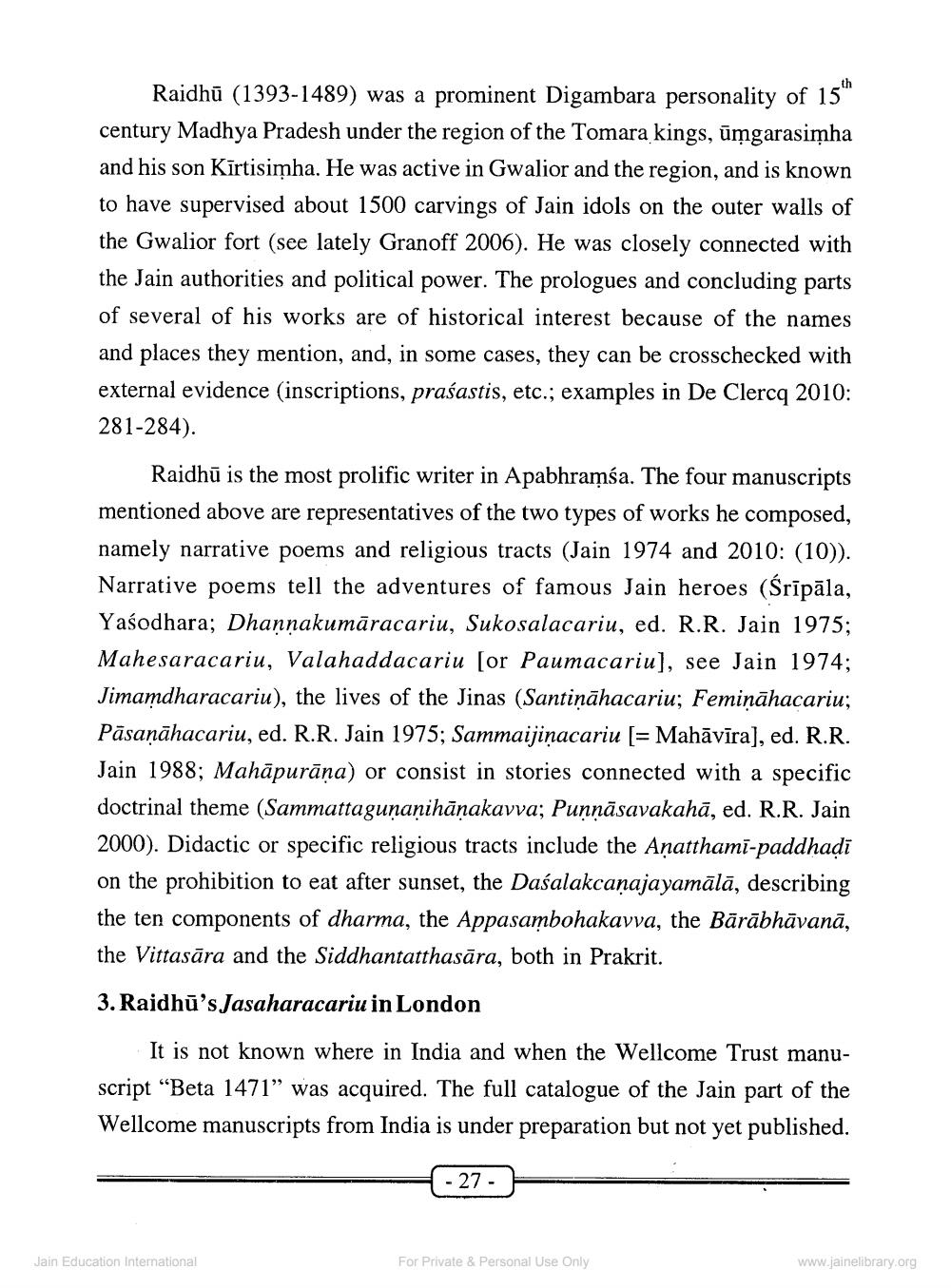________________
Raidhū (1393-1489) was a prominent Digambara personality of 15" century Madhya Pradesh under the region of the Tomara kings, ūmgarasimha and his son Kīrtisimha. He was active in Gwalior and the region, and is known to have supervised about 1500 carvings of Jain idols on the outer walls of the Gwalior fort (see lately Granoff 2006). He was closely connected with the Jain authorities and political power. The prologues and concluding parts of several of his works are of historical interest because of the names and places they mention, and, in some cases, they can be crosschecked with external evidence (inscriptions, praśastis, etc.; examples in De Clercq 2010: 281-284).
Raidhū is the most prolific writer in Apabhramśa. The four manuscripts mentioned above are representatives of the two types of works he composed, namely narrative poems and religious tracts (Jain 1974 and 2010: (10)). Narrative poems tell the adventures of famous Jain heroes (Śrīpāla, Yaśodhara; Dhaņņakumāracariu, Sukosalacariu, ed. R.R. Jain 1975; Mahesaracariu, Valahaddacariu [or Paumacariu), see Jain 1974; Jimamdharacariu), the lives of the Jinas (Santiņāhacariu; Femiņāhacariu; Pāsaņāhacariu, ed. R.R. Jain 1975; Sammaijiņacariu (= Mahāvīra), ed. R.R. Jain 1988; Mahāpurāņa) or consist in stories connected with a specific doctrinal theme (Sammattaguņaņihāṇakavva; Punnāsavakahā, ed. R.R. Jain 2000). Didactic or specific religious tracts include the Aņatthamī-paddhadi on the prohibition to eat after sunset, the Daśalakcaņajayamālā, describing the ten components of dharma, the Appasambohakavva, the Bārābhāvanā, the Vittasāra and the Siddhantatthasāra, both in Prakrit.
3. Raidhū's Jasaharacariu in London
It is not known where in India and when the Wellcome Trust manuscript “Beta 1471” was acquired. The full catalogue of the Jain part of the Wellcome manuscripts from India is under preparation but not yet published.
-27
Jain Education International
For Private & Personal Use Only
www.jainelibrary.org




